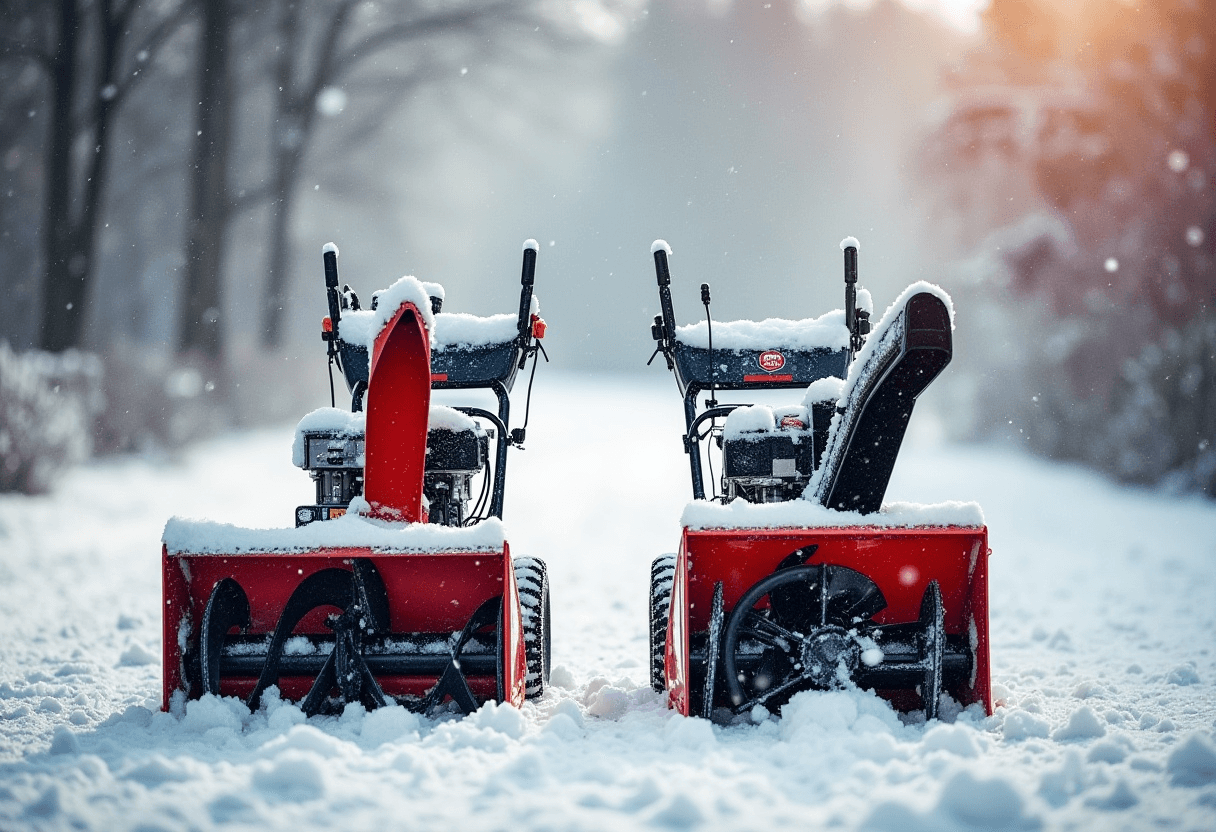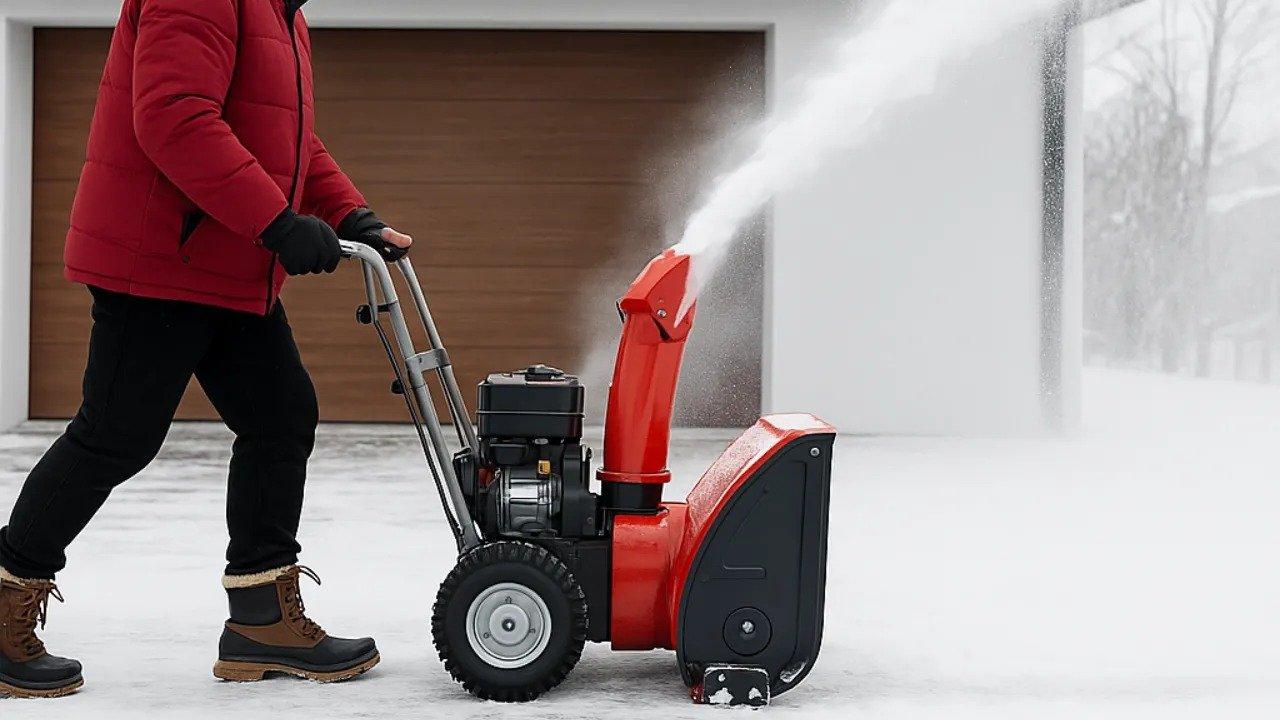How-To Guides
How to Store Snow Blower Safety For The Summer
AZparts Team
Updated on June 24, 2025
6 min read
When winter fades, knowing how to store your snow blower properly is essential to keep it running smoothly year after year. Improper storage can lead to rust, fuel issues, and costly repairs. In this guide, AZParts will walk you through the safest and most effective way to store your snow blower for the off-season.

1. How to Store Snow Blower
Knowing how to store a snow blower properly isn’t just good maintenance, it’s the difference between confidently clearing your driveway after the first snowstorm or fighting with a dead engine in freezing temps while the snow piles up. Here’s how to make sure your machine fires up without fail when winter returns:
1.1. Stabilize or Drain the Fuel
The most effective way to protect your fuel system is to add a fuel stabilizer to a full tank of gas. After adding the stabilizer, run the engine for a few minutes to allow the treated fuel to circulate through the entire system. This process helps keep the gasoline fresh for up to a year and prevents corrosion in metal fuel tanks.
Alternatively, you can choose to drain the fuel entirely if you prefer not to use a stabilizer. Both methods are effective, but you should never leave untreated fuel sitting in the tank throughout the summer, as it can degrade and damage the system.

You need to drain the fuel entirely or add a fuel stabilizer to a full tank (Source: AZParts)
1.2. Change the Engine Oil
Running the engine to distribute the fuel stabilizer also has the added benefit of warming the oil, making this the ideal moment to perform an oil change. Used oil contains harmful combustion by-products and acids that you don’t want lingering inside your engine during months of storage.
To avoid long-term engine wear, you should drain the old oil completely and refill the crankcase with clean, high-quality oil. Small engines typically run hotter and dirtier than automotive engines and often lack oil filters, which puts more strain on the oil itself. That’s why it’s best to use a durable product, which is specially formulated to handle the intense conditions of snow blower engines.

Used oil contains contaminants that can damage internal engine parts over time (Source: Freepik)
1.3. Fog the Engine
To add an extra layer of protection against corrosion and wear, you should fog the engine before storage. Start by removing the spark plug and spraying fogging oil directly into the cylinder. Then pull the recoil starter a few times to evenly coat the piston and cylinder walls.
This quick and easy process creates a thin protective film that shields metal surfaces from moisture and oxidation. Although it takes only a minute, it can prevent significant engine damage and extend the life of your machine.

Corrosion is a slow killer and summer storage is when it happens (Source: Pexels)
1.4. Prevent Storage Damage
Before putting your snow blower away for the season, take the opportunity to perform a thorough inspection. First, check the gear oil by removing the gearbox fill bolt and ensuring the oil level is adequate. Then inspect all belts for signs of cracking or fraying, and replace any worn ones now to avoid inconvenient breakdowns during the next snowstorm.
You should also examine the machine's linkages, bolts, and especially the auger housing to ensure everything is secure and in working order. Apply a spray lubricant to all pivot points to prevent rust and seizing over time.

Inspect and tighten bolts, check for worn parts, and lubricate moving components (Source: IStock)
Once everything’s checked, store your snow blower indoors, like in a garage or shed if you can. If you have to leave it outside, invest in a breathable, weather-resistant cover. It’ll keep out dust, moisture, and critters. If you’re looking for a solid recommendation, here are two top-rated options from AZParts's Snow Blower Cover that are worth checking out:
Snow Blower Cover – 420D Waterproof Universal Fit
Snow Blower Cover – 420D Waterproof Universal Fit (AZParts No: AZ00104477) protects your snow blower from the elements with this heavy-duty 420D waterproof cover, designed to keep your equipment safe from rain, snow, and even intense UV rays. With a generous size of 51" L x 33" W x 40" H, it fits a wide range of brands like EGO, Honda, and Toro.
It’s built tough to handle harsh winters, yet folds down compactly for easy off-season storage. If you want your snow blower to last season after season, this is a smart and affordable way to do it.

Snow Blower Cover – 420D Waterproof Universal Fit keeps your equipment safe from rain, snow, and even intense UV rays (Source: AZParts)
Snow Blower Cover – 420D Marine-Grade with Adjustable Straps
Snow Blower Cover – 420D Marine-Grade with Adjustable Straps (AZParts No: AZ00161098) is made with 420D marine-grade fabric, this cover is built to withstand snow, rain, wind, and sun all year round. Its universal fit is ideal for most two-stage snow blower models, and the adjustable straps make sure it stays in place, even on windy days.
It’s a simple way to prevent costly repairs later. Durable, easy to store, and reliable, this cover offers peace of mind while your snow blower sits through the offseason.

Snow Blower Cover – 420D Marine-Grade with Adjustable Straps (AZParts No: AZ00161098) is durable, easy to store, and reliable (Source: AZParts)
2. FAQs about Snow Blower Storage
2.1. How should I store my snowblower?
Start by giving it a good clean, you need to remove any snow, salt, or dirt that’s built up. Then, you can follow these key steps:
- Stabilize or drain the fuel to prevent carburetor clogs.
- Change the oil to remove old, acidic residue.
- Fog the engine to protect internal parts from corrosion.
- Check belts, bolts, and moving parts for wear and tear.
- Cover it up with a waterproof, breathable cover.
- Store it in a dry, sheltered space, like a garage or shed. If stored outside, a high-quality cover is a must.
Check more: How to Clean A Snow Blower Carburetor
2.2. Is it better to store a snow blower with or without gas?
It depends, but never store it with untreated gas.
- Option 1: Add fuel stabilizer to a full tank and run the engine for a couple of minutes to circulate it. This is ideal if you plan to leave fuel in the tank.
- Option 2: Drain the fuel completely, including the carburetor. This eliminates the risk of old gas causing buildup.
Both are valid, but letting untreated gas sit is a sure way to end up with starting issues next season.
2.3. Where can I store my snowblower without a garage?
No garage? No problem, but protection is key.
- Use a weather-resistant, heavy-duty cover (like those from AZParts) to shield your blower from rain, snow, and UV rays.
- Store it on a raised platform or wooden pallet to keep moisture from the ground from seeping in.
- If possible, place it under an overhang, tarp shelter, or in a lockable outdoor storage shed to limit exposure to the elements.
As long as it’s dry, stable, and covered, your snow blower will stay in good shape until winter rolls back around.
Storing your snow blower safely and correctly isn't just about saving space, it's about protecting your investment. With tips from AZParts and access to quality replacement components such as carburetor, clutch cable, etc. you can keep your snow blower performing like new, season after season.
Contact information:
8 The Green, Ste A, Dover, Delaware 19901-3618, United States
Snowblower
Further Reading
Further Reading




%2520Cropped_1747039495.jpg&w=3840&q=75)
_1750053523.jpg&w=3840&q=75)